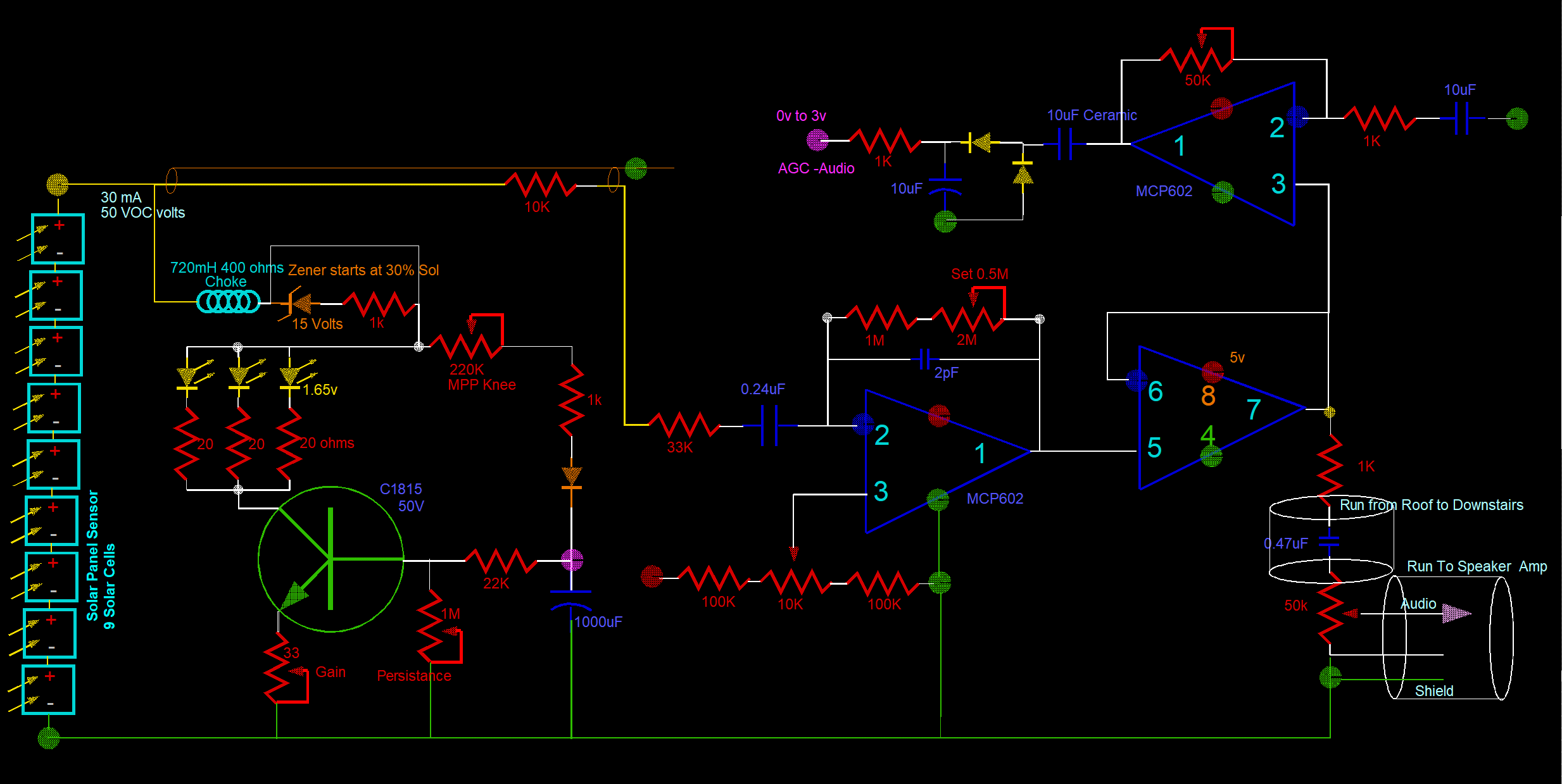
and their sounds


|
Solar Cell Audio and their sounds |

|
 I do not know if I wanted to "hear" the sun directly, of if I wanted to hear the effects of the sun.
I do not know if I wanted to "hear" the sun directly, of if I wanted to hear the effects of the sun.
Audio Amp
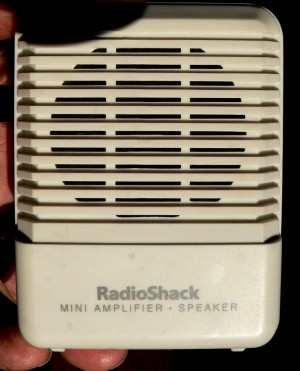
|

|

|
 Originally the SolarAudio Sensor was placed on top of the Air Conditioner. After only a year it was found that connectors could not be "water proofed".
All wires were soldered, then silicon past, and heatshrunk, then tape with caulking to prevent tape unwinding.
Then the all wiring was wrapped in aluminum foil and metalized tape to prevent ozone oxidation, solar heat degradation, and EMP shielding.
Originally the SolarAudio Sensor was placed on top of the Air Conditioner. After only a year it was found that connectors could not be "water proofed".
All wires were soldered, then silicon past, and heatshrunk, then tape with caulking to prevent tape unwinding.
Then the all wiring was wrapped in aluminum foil and metalized tape to prevent ozone oxidation, solar heat degradation, and EMP shielding.
 Here is the permanent SolarAudio Sensor, a half watt panel. For about two years it was on the front of the Air Conditioner.
The solar cell was totally incased in Silicon Glue. The incasing experiment turned out to be good: no problems with water.
However, a horizontal mounting showed only terrestrial events, and nothing of remarkable interest.
Here is the permanent SolarAudio Sensor, a half watt panel. For about two years it was on the front of the Air Conditioner.
The solar cell was totally incased in Silicon Glue. The incasing experiment turned out to be good: no problems with water.
However, a horizontal mounting showed only terrestrial events, and nothing of remarkable interest.
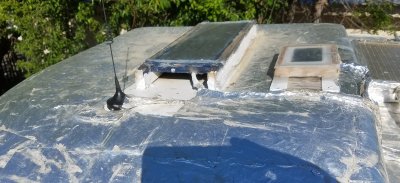 Then I mounted it on top of the Air conditioner, back where it had been originally.
This works better for "atmospheric" noises, for example "fluttering" with atmospheric heat layers.
The SolarAudio Sensor is on the right, and the other solar sensor is the SolarFlux Sensor on the left.
It is 15 watts and VOC is 22 volts. It gives the percent of a Sol and is dedicated to the measurement of Solar Radiation (Flux).
The rest of the air conditioner still needs more "metalizing" and aluminum coating.
A cell boaster antenna can be seen up front, and yes, can throw off the calibration of the SolarFlux with a shadow.
Also, the antenna can be heard as wind noise in the SolarAudio. But I will live with it.
The AirConditioner is the highest point of the RV, and works good for all three devices.
Then I mounted it on top of the Air conditioner, back where it had been originally.
This works better for "atmospheric" noises, for example "fluttering" with atmospheric heat layers.
The SolarAudio Sensor is on the right, and the other solar sensor is the SolarFlux Sensor on the left.
It is 15 watts and VOC is 22 volts. It gives the percent of a Sol and is dedicated to the measurement of Solar Radiation (Flux).
The rest of the air conditioner still needs more "metalizing" and aluminum coating.
A cell boaster antenna can be seen up front, and yes, can throw off the calibration of the SolarFlux with a shadow.
Also, the antenna can be heard as wind noise in the SolarAudio. But I will live with it.
The AirConditioner is the highest point of the RV, and works good for all three devices.
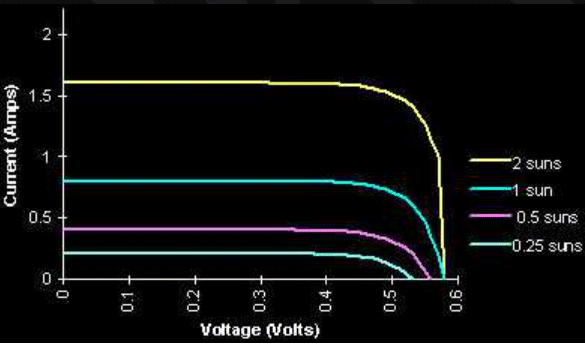 You can not just simply attach an audio amp to the output of a solar cell. It will not work.
You have to load the cell to produce fruitful voltage swings. This regime is the same as the MPP (Maximum Power Point).
And as you can see, MPP changes with Solar Intensity.
You can not just simply attach an audio amp to the output of a solar cell. It will not work.
You have to load the cell to produce fruitful voltage swings. This regime is the same as the MPP (Maximum Power Point).
And as you can see, MPP changes with Solar Intensity.
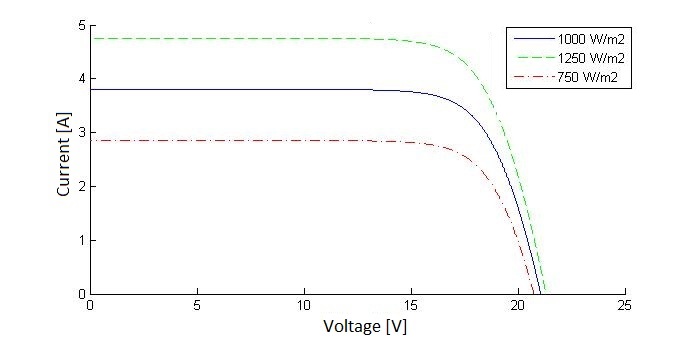 If you just connect an audio amp to a solar cell.
All of the different Solar Intensities converge on the voltage axis, about 21 volts.
They converge at the Open Circuit Voltage, OCV. Therefore the voltage does not change much with varying Irradiance.
The voltage just stays at OCV, particular at high Sols.
If you just connect an audio amp to a solar cell.
All of the different Solar Intensities converge on the voltage axis, about 21 volts.
They converge at the Open Circuit Voltage, OCV. Therefore the voltage does not change much with varying Irradiance.
The voltage just stays at OCV, particular at high Sols.
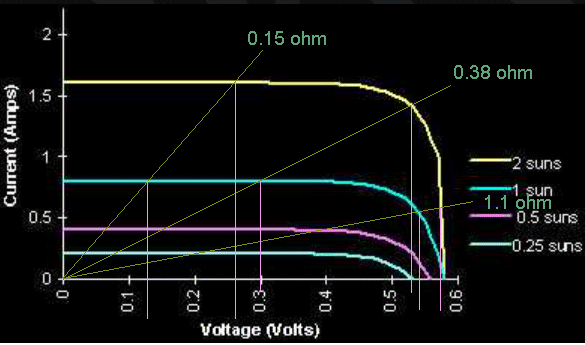 Here I have drawn in three static load lines.
They are identified in ohmage as internal load lines,
but they are still representative of external loads of my choosing.
Also, internal load lines are not straight and linear.
Here I have drawn in three static load lines.
They are identified in ohmage as internal load lines,
but they are still representative of external loads of my choosing.
Also, internal load lines are not straight and linear.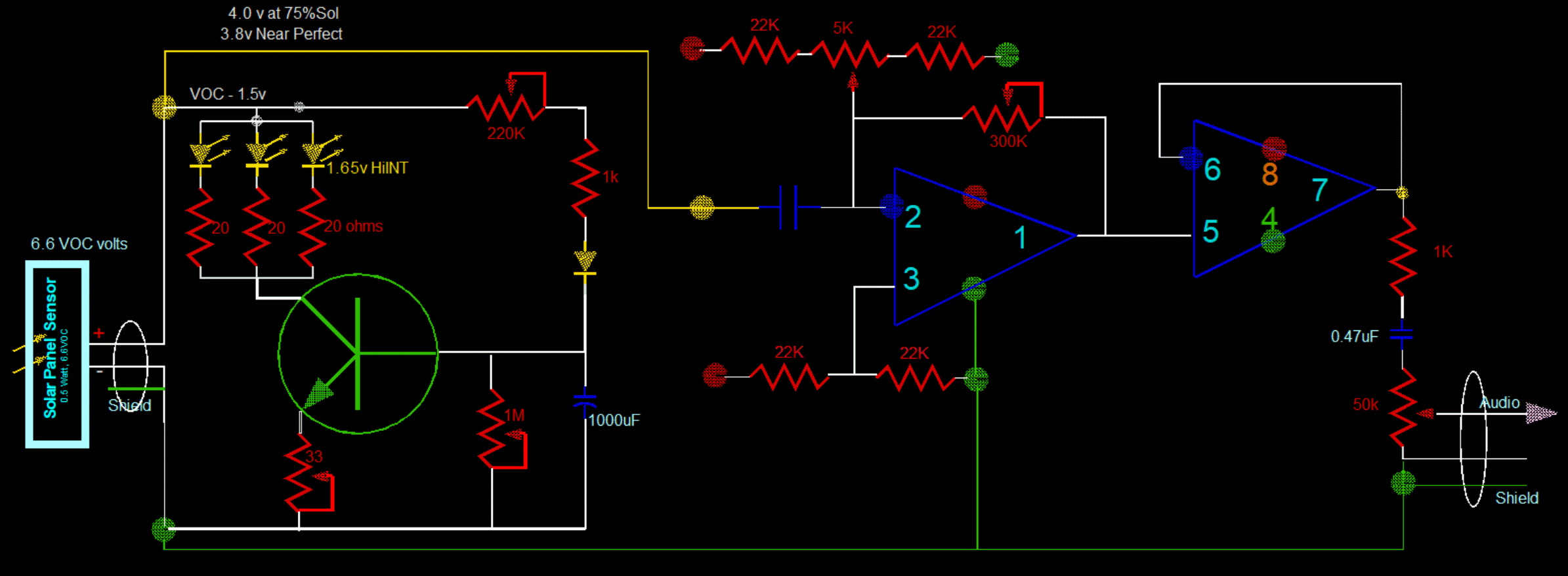
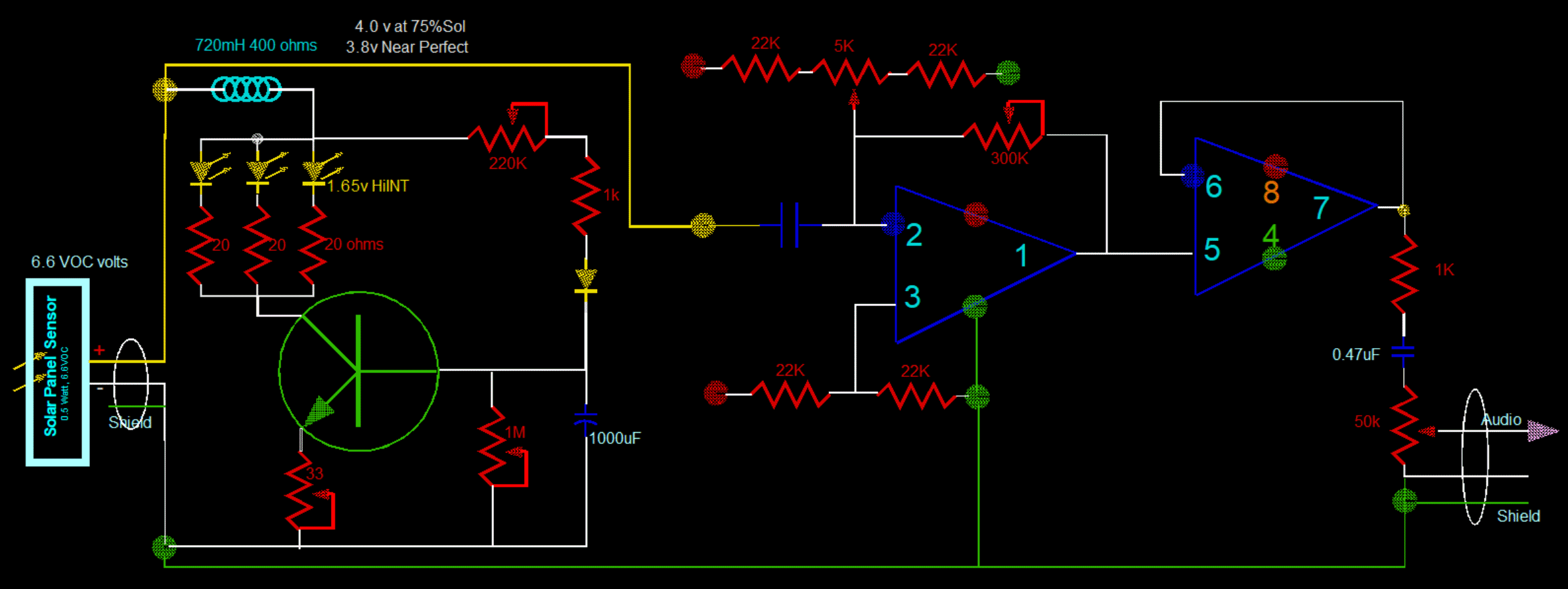 added a choke made from a relay coil.
added a choke made from a relay coil.
 Have better side vision.
Here, I have added half spheres. This increases side vision, for earthly stuff, and still have sky vision.
But it decreases overall sensitivity.
Have better side vision.
Here, I have added half spheres. This increases side vision, for earthly stuff, and still have sky vision.
But it decreases overall sensitivity.
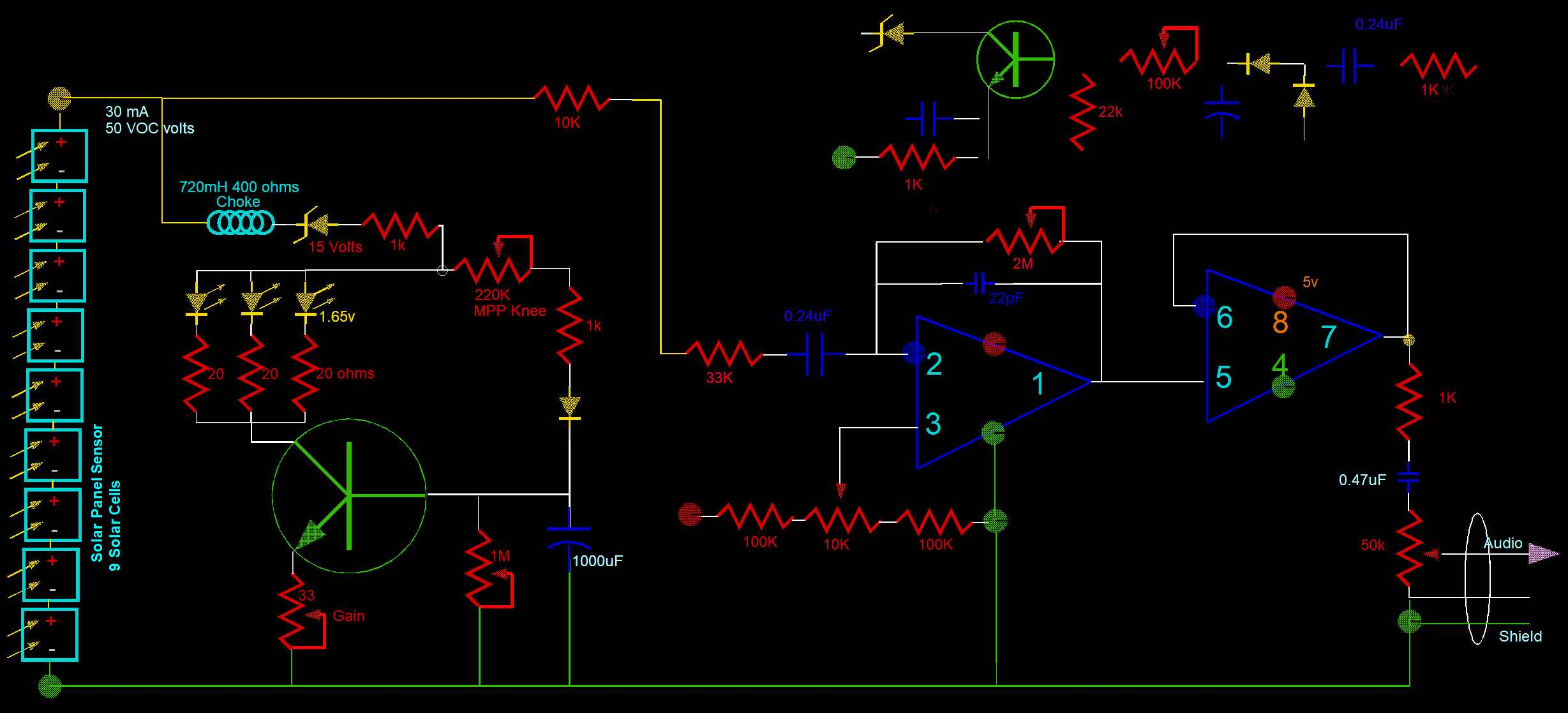
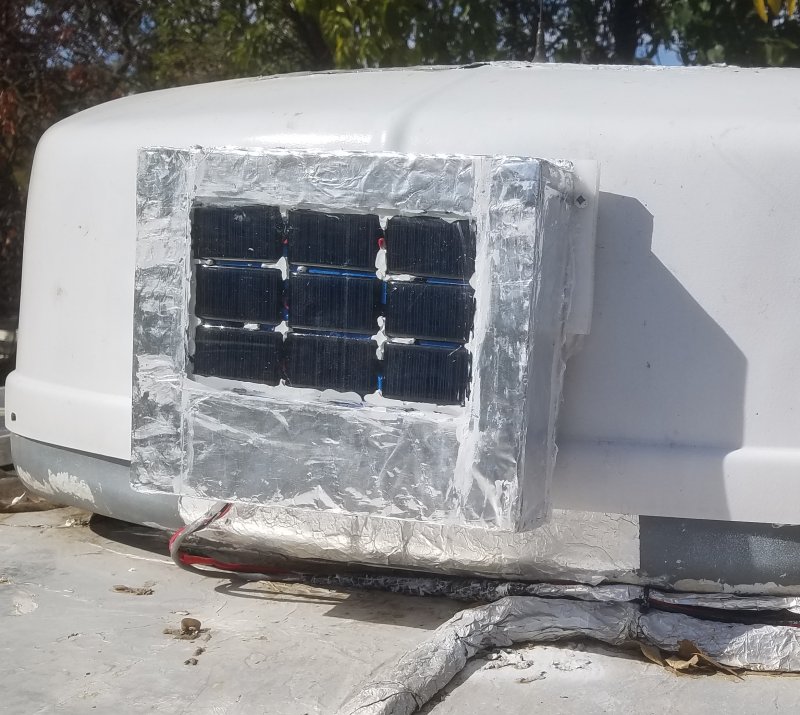 What about atmospheric air showers?
Air showers, originating in the atmosphere, from one or more particles, grow from the subsequent multiplication of particles.
One of several manifestations is light. I would be looking for a fast light.
I am looking for something that my eyes have never seen. Even on a black night, I have never seen this light.
The solar panels have to see light that my eyes can not see.
What about atmospheric air showers?
Air showers, originating in the atmosphere, from one or more particles, grow from the subsequent multiplication of particles.
One of several manifestations is light. I would be looking for a fast light.
I am looking for something that my eyes have never seen. Even on a black night, I have never seen this light.
The solar panels have to see light that my eyes can not see.
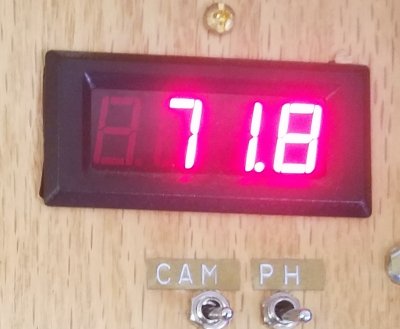
 At the output of the OpAmp the DC level is set to operate between the rails, or about 2.5 volts.
The AC signal is about 0.4 volts peak to peak.
At the output of the OpAmp the DC level is set to operate between the rails, or about 2.5 volts.
The AC signal is about 0.4 volts peak to peak.
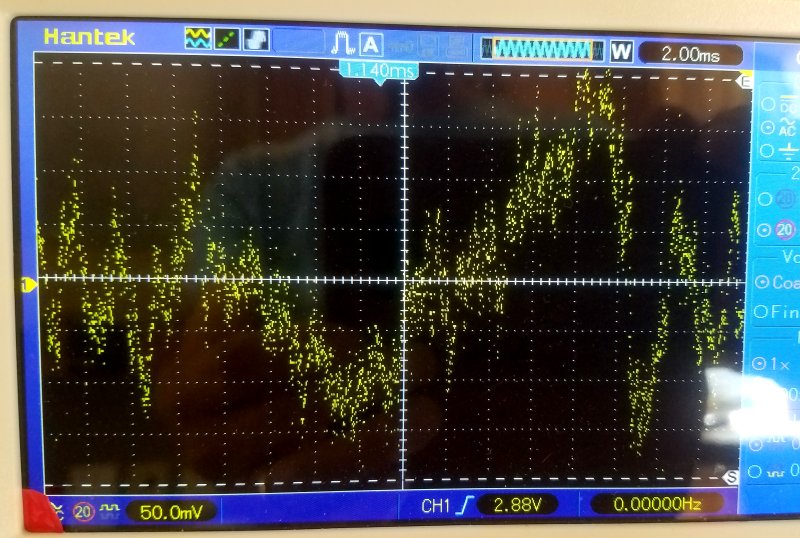 A closer look at the AC signal is about 0.4 volts pp.
A closer look at the AC signal is about 0.4 volts pp.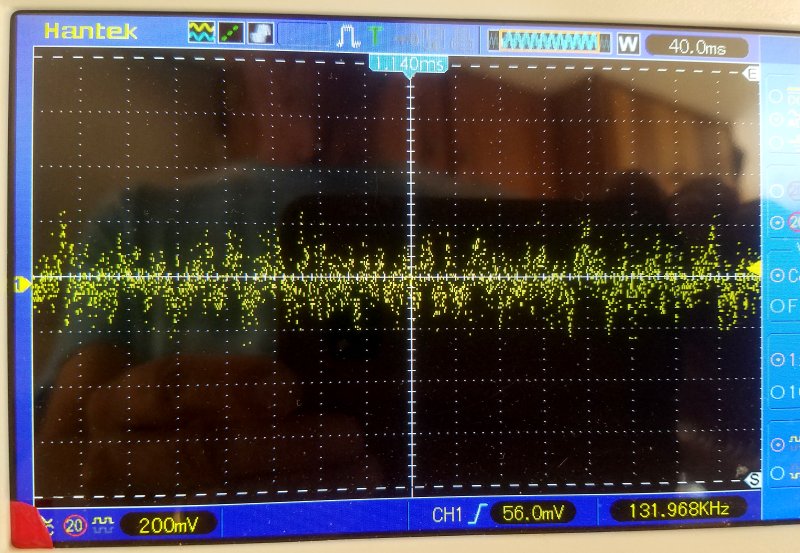 Here the span is slowed down to 40mS/cm. And I can just make out a dominant frequency.
It is about 3.5 cycles per 2 cm, 3.5 cycles per 80mS. About 44 Hz.
A spectrum analyser would bring out the frequencies better than my imagination.
Here the span is slowed down to 40mS/cm. And I can just make out a dominant frequency.
It is about 3.5 cycles per 2 cm, 3.5 cycles per 80mS. About 44 Hz.
A spectrum analyser would bring out the frequencies better than my imagination.
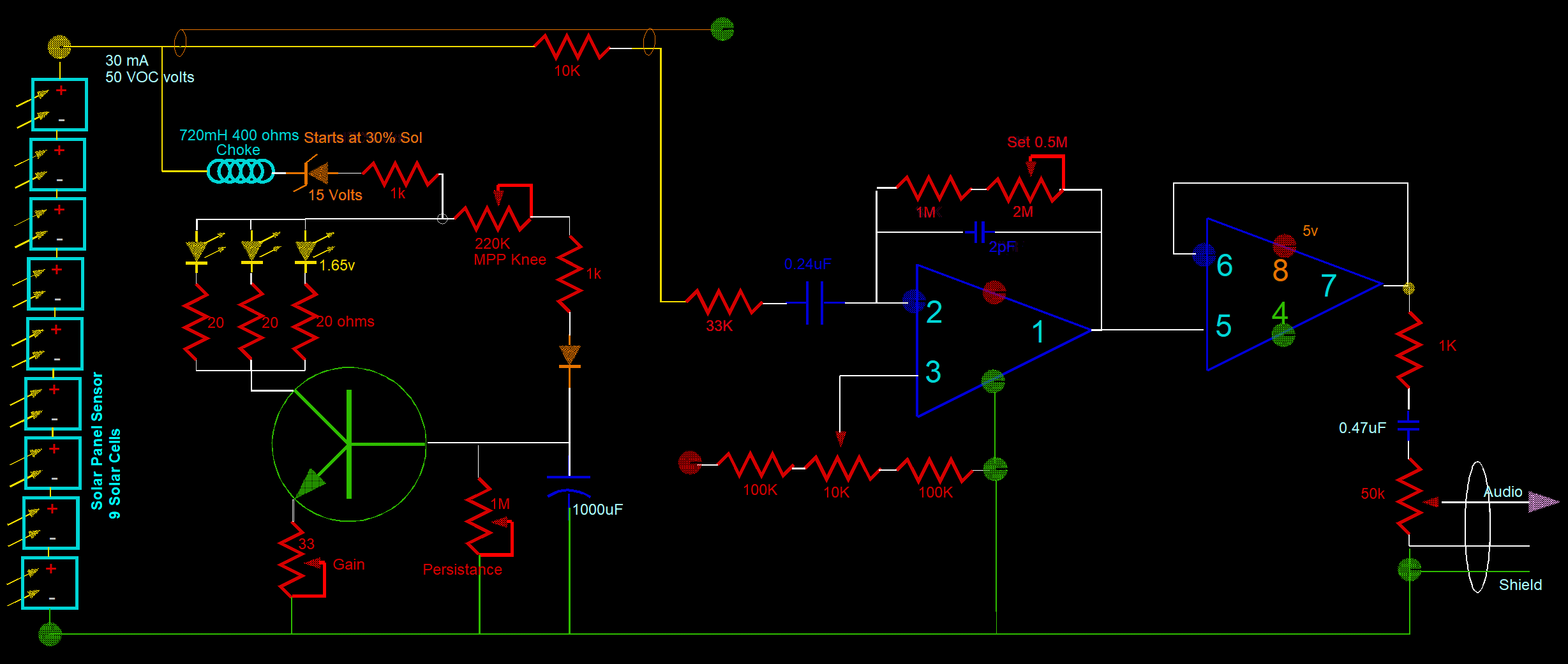
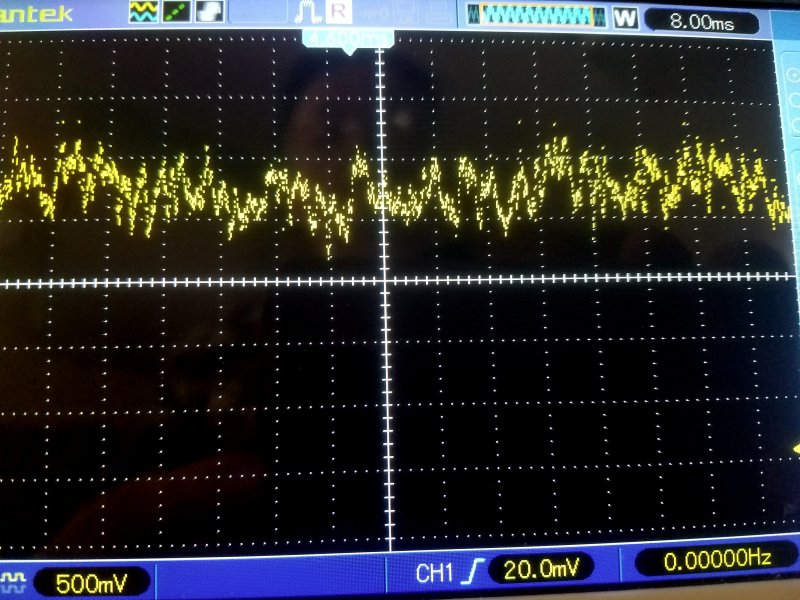 The Solar Fluctuations are about .8 volts
The Solar Fluctuations are about .8 volts 